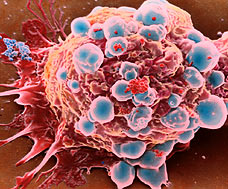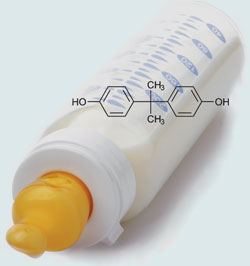For decades the dogma in medicine has been that any kind of cancer, including breast cancer would be treated with surgery, radiotherapy and/or chemotherapy. However, the 5-year survival rates were disappointing as this table shows. In the 1980’s the idea of adjuvant treatments for cancer came up and one of the popular methods was hyperthermia treatment. Cancer cells of a variety of cancers were found to be very heat sensitive, but the limiting factor in treating with hyperthermia systemically was the fact that bone marrow cells were found to be very heat sensitive, which limited this application. With respect to breast cancer a review of data pooled from 5 trials showed that there was an 18% survival advantage due to the added step of hyperthermia in addition to radiotherapy. With radiotherapy alone a group of advanced breast cancer patients had a 5-year survival of 41%, but a comparable group treated with a combination of radiotherapy and hyperthermia had a survival of 59%.
Let’s back track for a moment and ask what breast cancer is. In the past we thought it developed out of one mutated cell, a breast cancer cell that would multiply into a clone of cells, which would first grow locally and then spread as metastases throughout the body at a later time. Unfortunately further research has shown that breast cancer can simultaneously occur in several spots in one breast or even in both breasts. The spreading of the cell clones to distant areas can occur very early on, but cells can lay dormant for years and start growing again at a time when the immune system is weak. With these facts in mind it can readily be seen that surgery cutting out a “local breast lump” will not be successful in the long term as a treatment of breast cancer, even when radiotherapy treatment is added to sanitize the local lymph glands of local cancer metastases. Adding chemotherapy to eradicate distant metastases may sound like a good idea, but chemotherapy is very toxic to bone marrow cells and to the immune cells that are supposed to kill the last breast cancer cells. As a result, chemotherapy has its own problems. Medical researchers had to start thinking outside of the box to discover a breakthrough in breast cancer treatment.
Fast forward to 2012. We still need a breast cancer treatment method that is non-toxic, that kills the breast cancer cells and that ensures that there will be no recurrences in the future.
This new treatment method is called “laser-assisted immunotherapy“, and it is being studied in a pilot study right now. 62.5% of end stage breast cancer patients had a response rate, something that has never been achieved before. The systemic side-effects of hyperthermia are overcome by heating only locally and directing the laser beam to the diseased tissue. The quality of the Laser beam is close to the infrared frequency of light . This is amplified by injecting the FDA approved compound indocyanine green, which absorbs more heat from the laser beam right in the cancer cells where it is needed for local hyperthermia treatment. The immune cells and the bone marrow cells are not harmed. The killed cancer cells release the cancer antigens that the immune system could not recognized before, as the immune cells were suppressed by suppressor T lymphocytes. With this added immune booster which is called “glycated chitosan” the cancer patients’ immune cells(called “killer T lymphocytes”) are now being stimulated and are in a position to eradicate the last trace of cancer cells anywhere in the body. This is similar to a vaccination procedure that takes place within the body of the cancer patient. The T lymphocytes remember the surface antigen of the cancer cells that were killed. As a result the same type of tumor will never reoccur in that person’s life. It also takes care of the dilemma of the past that sometimes more than one cell type clone was found among the biopsy material of a cancer patient.
At this point the trial has not reached the 5 year mark of survival. Only 15 patients of the total of 45 patients have so far been enrolled. But 80% of the 15 patients have survived 2.5 years, which is unheard of with stage IV (late stage) breast cancer. In an experimental breast cancer model in rats where laser assisted immunotherapy was first shown to be effective, there was 100% survival of the treated group. However, it was noted that it was essential that all three components of the new treatment modality were followed. The protocol for the human pilot study therefore is as follows:
1. After placement of an anesthetic in the tumor area the indocyanine green is injected into the tumor (placement of the photosensitizer).
2. The laser beam near infrared frequency of light is applied in the tumor area (or over the palpable metastases). This application takes about 10 to 12 minutes and two courses are given over two weeks. An option of a third course within one year may be considered, but did not have to be done so far.
3. The adjuvant immune booster (glycated chitosan) is injected into and underneath the tumor right after the laser treatment is finished.
This triple therapy is the secret to the success of the new breast cancer treatment as each step is augmenting the other steps resulting in a complete destruction of the breast cancer and an active immunization against any of the residual cancer cells.
At this point the offshore Caribbean breast cancer treatment pilot study has been chosen to bypass frustrating FDA slow-downs in the US. But I suspect that proper protocols in a much bigger randomized US based study will follow the obvious successes in these late stage breast cancer cases. New cancer therapies are urgently needed. They are typically introduced by treating “incurable” (late stage) patients first. We are about 2 1/2 years away from the completion of this pilot study so that 5-year cures rates can be compared to older studies with the conventional cancer treatment approach. I am convinced that this new approach will not only help breast cancer patients, but will also help prostate cancer patients and pancreas cancer patients (these three come to mind as they all are glandular cancers). Surgery for the removal of lymph gland metastases in prostate cancer patients and breast cancer patients using laser assisted surgery with indocyanine green stained lymphatic tissue has already been pioneered. It also opens up possibilities of modifying the method to suit other types of cancers.
More information about breast cancer: http://nethealthbook.com/cancer-overview/breast-cancer/
Last updated Nov. 6, 2014















